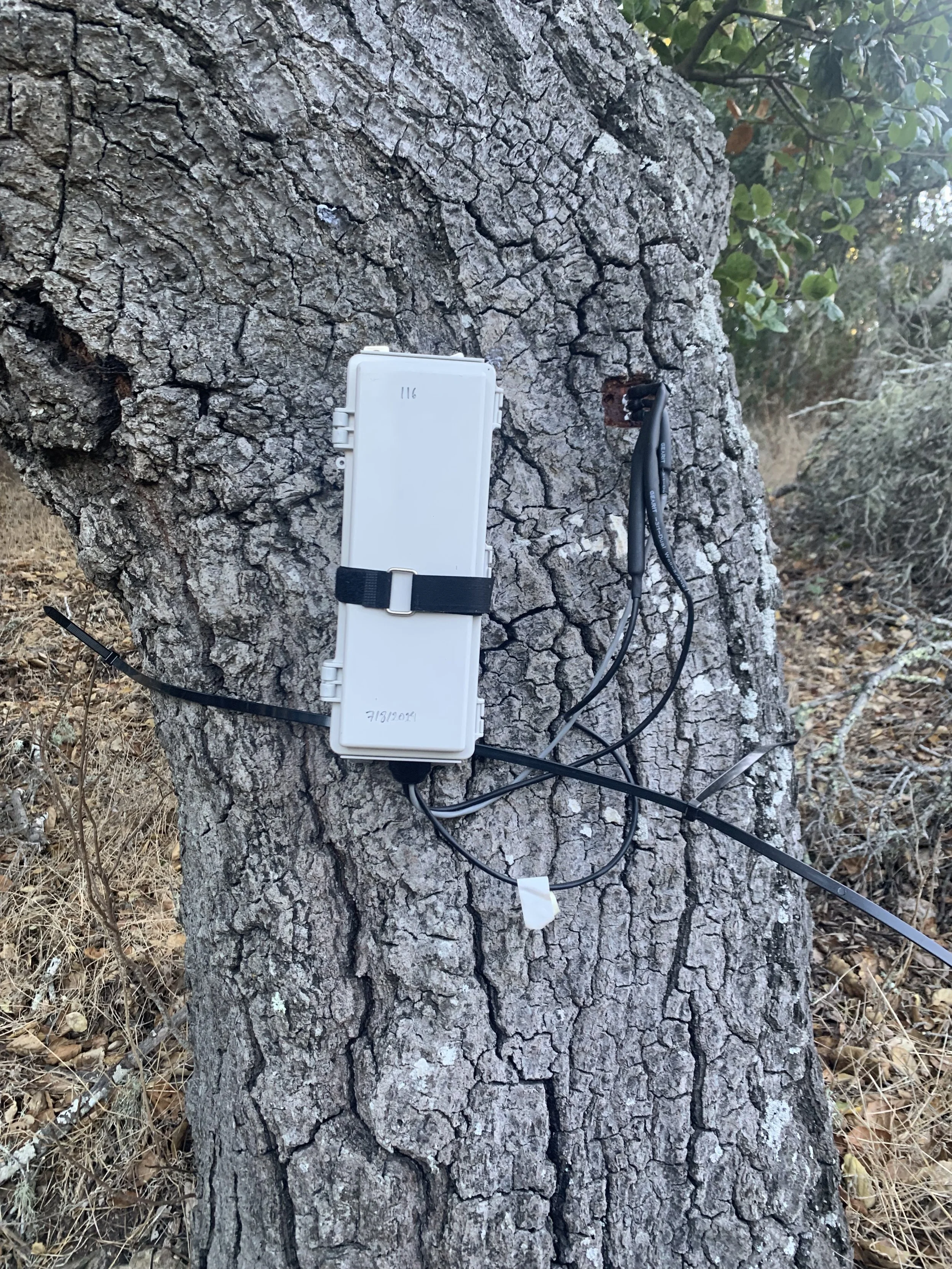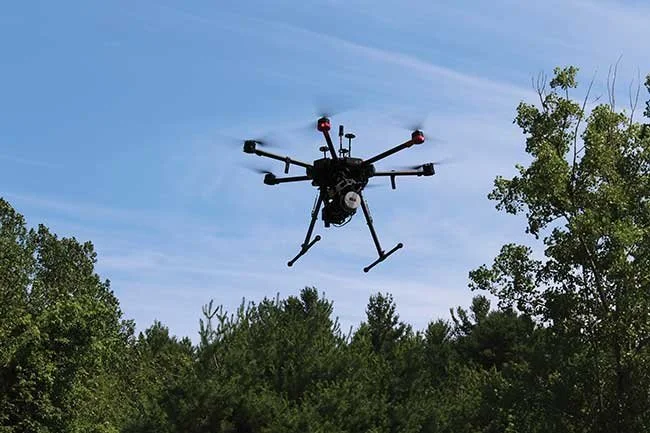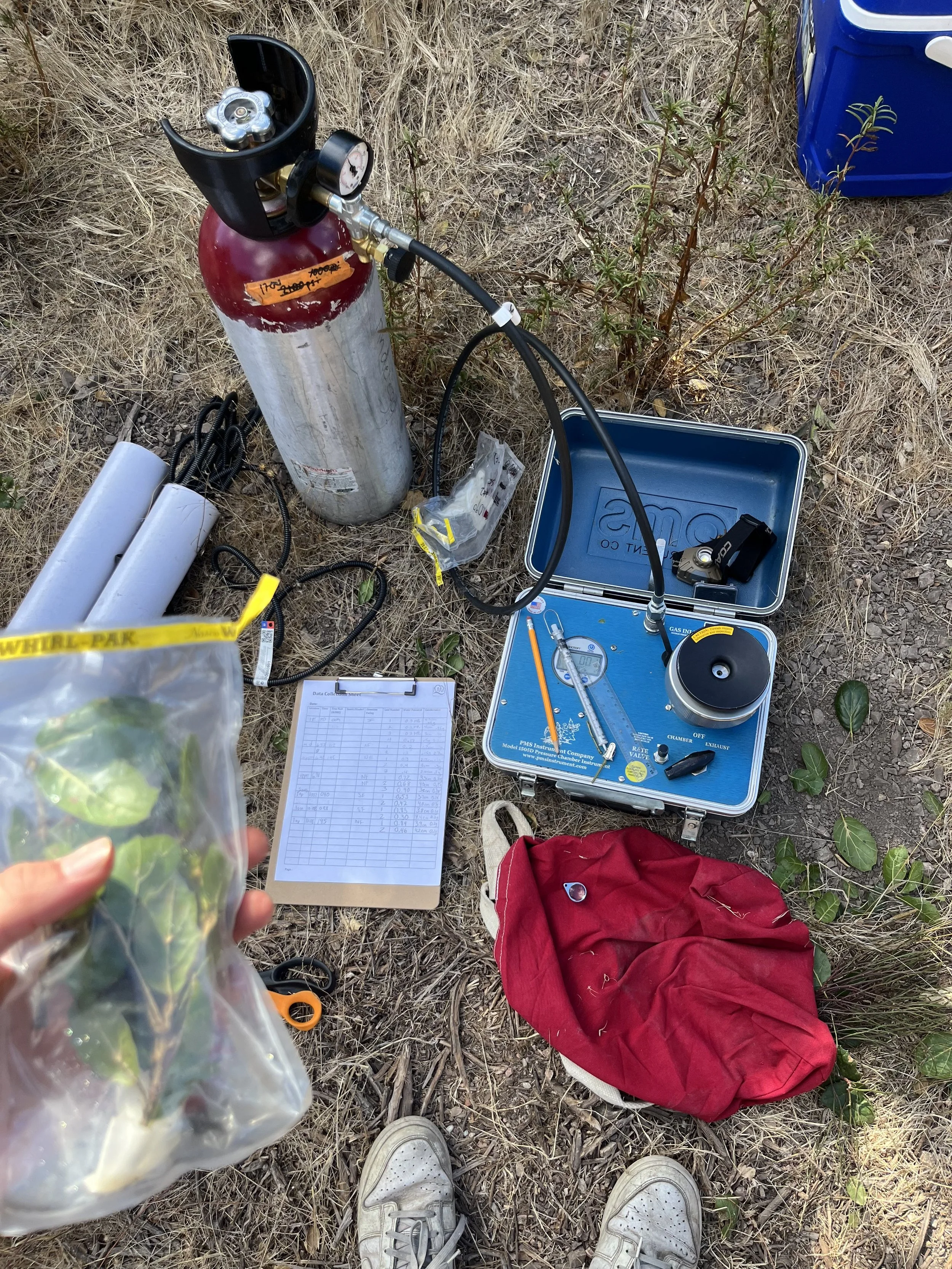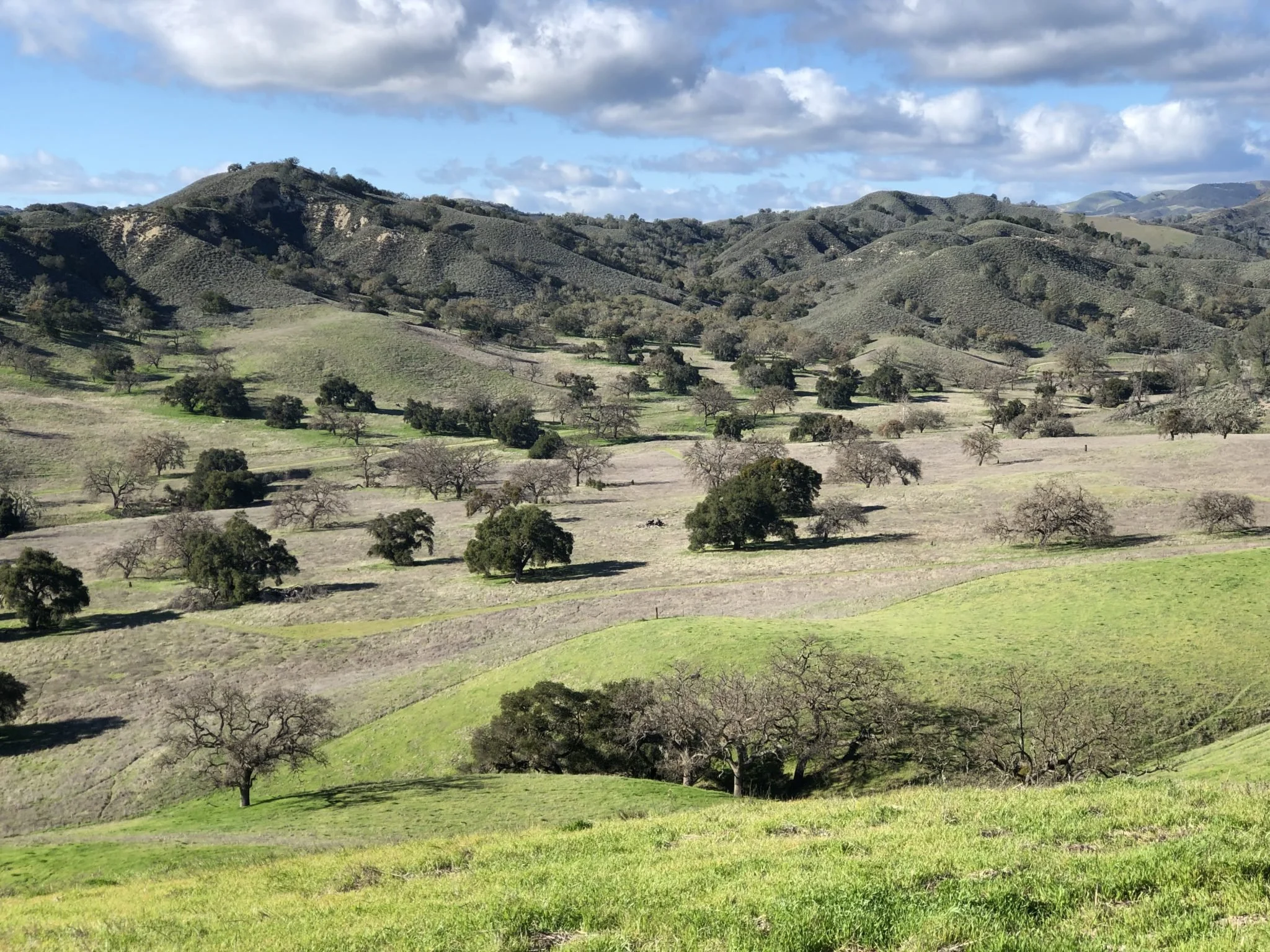
Characterizing plant hydraulic trait variation
How do individual trees manage water under stress?
Our research explores this question by quantifying variation in plant hydraulic traits, such as stomatal conductance, canopy transpiration, and hydraulic conductivity across environmental gradients. By examining how these traits vary, we aim to better understand how individual-scale physiology shapes landscape-level resilience to drought and water availability.
Why trait variation matters
Plant hydraulic traits govern how water moves from soil to leaf and how trees manage regulate water use. Variation across these traits is key to understanding plant responses to drought and modeling how vegetation will respond to environmental change across heterogeneous landscapes.
Trait characterization workflow
-

Field sensor network
We’ve established intensive ecohydrological transects equipped with sap flow sensors embedded in tree xylem and soil moisture profilers measuring 10 cm increments down to 1 meter. These instruments continuously capture how water availability in the soil translates into tree-level water use, providing a dynamic view of hydraulic function across environmental gradients.
-

Canopy-scale imaging
Using a UAV outfitted with thermal, multispectral, and meteorological sensors, we estimate canopy transpiration and detect signs of water stress. By calculating latent heat flux (λE) through surface energy balance models, we map spatial patterns of water use at the canopy scale—across hundreds of trees in a single flight.
-

Leaf-level trait validation and ground-truthing
To ground our remote and sap flow estimates, we collect in situ leaf-level measurements of stomatal conductance using porometers, and assess photosynthetic function with a gas exchange system. These targeted measurements validate the UAV and sensor network data, helping us interpret hydraulic traits in terms of both structure and function.

